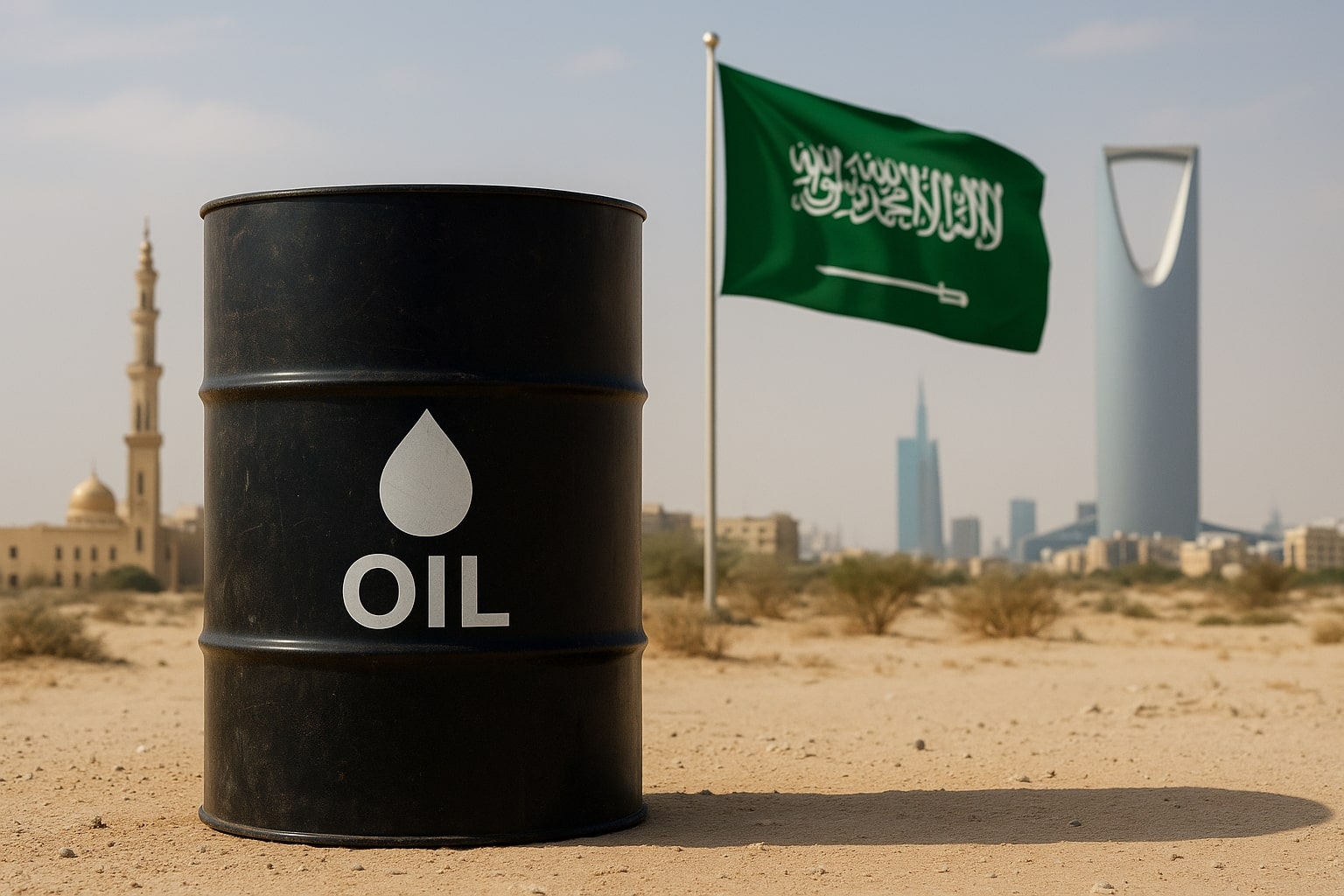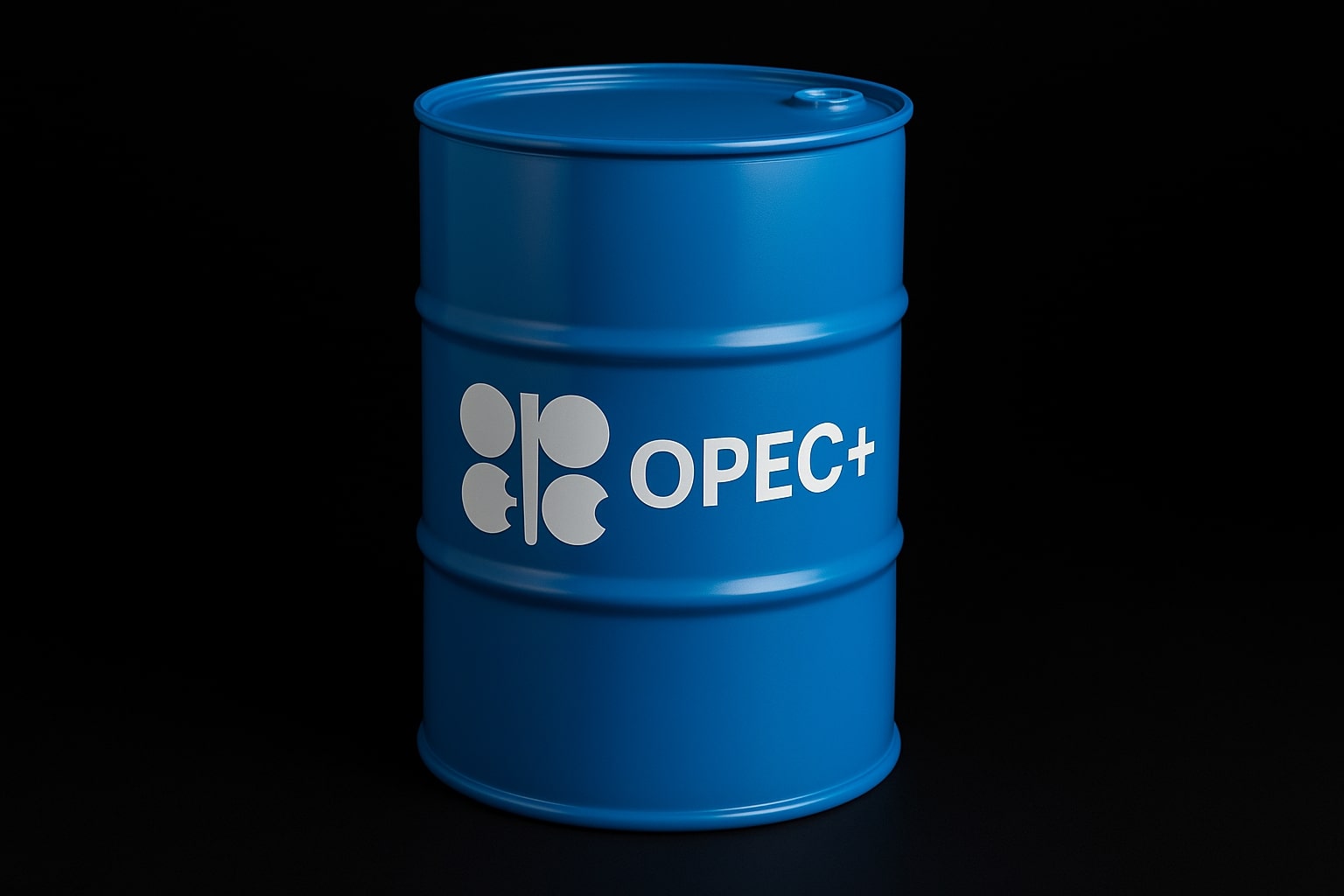
Oil Prices Power Past $64: Can WTI (CL=F) Now Break $65 And Ignite A Fresh Rally?
Saudi exports steady at 47M barrels to China, trade optimism lifts demand, US inventories tighten—will WTI (CL=F) hit $65 and drive Brent (BZ=F) past $68 in coming days? | That's TradingNEWS
Oil Prices Rally Above $64 As Saudi Export Strategy, Trade Optimism, And Tight US Supply Fuel Gains
WTI (CL=F) crude oil is surging, now trading above $64, powered by a complex web of geopolitical shifts, supply dynamics, and demand optimism. Brent (BZ=F) is moving in tandem, eyeing resistance near $68. Saudi Arabia continues its aggressive defense of Chinese market share, US-China trade talks have lifted global demand sentiment, and upcoming US inventory data could further shift the landscape. The question now gripping the market: can WTI push through $65 and extend toward the 200-day EMA?
Saudi Arabia Adjusts July Exports To China, Cuts Asian Prices To Hold Market Share
Saudi Arabia’s oil strategy is front and center. The kingdom will ship around 47 million barrels of crude to China in July, slightly below June’s 48 million barrels but still maintaining a robust flow. State-run giants Sinopec and PetroChina will see allocations rise, while three independent Chinese refiners will receive less. The move aligns with Aramco’s decision to trim its official selling price of Arab Light by $0.20 per barrel for Asian buyers starting in July—pricing the grade at $1 over the benchmark.
Saudi Arabia is contending with intensifying competition from Russia and Iran, both offering discounts and flexible terms to Chinese buyers. With China importing more than two-thirds of its crude in 2024, maintaining dominance in this market is non-negotiable for Riyadh. The July adjustments signal a tactical play to lock in long-term partners while staying agile amid a volatile geopolitical backdrop.
US-China Trade Talks Spark Demand Optimism, Lifting WTI Above $64
The second day of US-China trade negotiations in London is injecting fresh bullish energy into the oil market. Comments from US Commerce Secretary Howard Lutnick confirming "positive progress" have reinforced hopes of a breakthrough. President Trump’s remarks citing "good reports" from the talks have added to the momentum. As the world’s two largest economies inch toward improved trade ties, the ripple effects on global oil demand are immediate and material.
WTI crude responded swiftly, climbing above $64 and sustaining its gains. With trade cooperation expected to improve supply chain stability and economic activity, traders are positioning for a potentially stronger global energy demand profile heading into Q3.
US Business Optimism, API Inventory Expectations Add Further Tailwinds
The National Federation of Independent Business (NFIB) Business Optimism Index rose to 98.8 in May, exceeding the consensus forecast of 95.9. This uptick in US small business confidence supports higher energy demand expectations, adding another pillar to the bullish oil narrative.
All eyes now turn to the American Petroleum Institute’s weekly inventory report. A build of 0.7 million barrels is expected, following last week’s sharp 3.3 million barrel drawdown. Should the actual data reveal a surprise draw or a smaller-than-expected build, WTI prices could rally further. Conversely, a larger-than-anticipated build may temper the current upside momentum.
WTI Technicals Show Breakout Potential, Brent Lags But Poised To Follow
WTI’s technical picture is improving markedly. The price has extended its advance above $64, eyeing the key $65 psychological level. A sustained break above this threshold could set the stage for a run toward the 100-day Simple Moving Average (SMA) just below $66. The Relative Strength Index (RSI) at 61 reflects solid bullish momentum, though the market may be somewhat stretched in the short term.
A pullback to the 20-day SMA near $62 would likely attract dip buyers eager to capitalize on the emerging breakout. The recent accumulation pattern suggests strong underlying demand as crude oil reclaims its inflation-hedge status amid broader commodity strength.
Meanwhile, Brent (BZ=F) is mirroring WTI’s advance but remains below its own breakout level near $68. Market dynamics suggest Brent will likely play catch-up if WTI can hold its gains. Both benchmarks remain tightly correlated over time, and Brent’s move above $68 could trigger a fresh wave of buying interest.
Geopolitical Catalysts Keep Bulls In Control Despite Demand Headwinds
Despite IEA estimates showing global oil demand growth slowing to under 1 million bpd this year—the weakest pace since pandemic lockdowns—prices are climbing. The catalyst: geopolitics. US-China trade optimism, Saudi pricing strategy, and ongoing supply-side uncertainties are outweighing near-term demand concerns.
Notably, US officials are signaling potential easing of chip export restrictions in exchange for China loosening rare earth export curbs. This negotiation breakthrough could avert supply chain crises across industries and fuel broader economic activity—positive for oil demand.
At the same time, Saudi Arabia’s tactical supply management and price adjustments underscore its resolve to protect market share and support prices even as global fundamentals soften.
Outlook For WTI And Brent: Buy, Hold, Or Sell?
Given the current landscape, WTI (CL=F) remains a tactical buy as long as it holds above $62. With RSI strength, bullish price action, and positive geopolitical signals, a break toward $66 and potentially higher appears likely. Brent (BZ=F), trading just below $68, should follow suit if WTI’s breakout solidifies.
Traders should monitor this week’s US API and EIA inventory data closely, as surprises could tilt near-term momentum. Meanwhile, further clarity from US-China trade talks could add fuel to the rally or introduce fresh volatility.
That's TradingNEWS
Read More
-
BITQ ETF Soars 66.55% as Bitcoin Blasts Past $124,000 — Crypto Equities Lead 2025 Rally
13.10.2025 · TradingNEWS ArchiveStocks
-
XRP ETFs XRPR, XRPI Slip as Ripple XRP-USD Holds $2.62 — SEC Fast-Track Could Ignite $20B
13.10.2025 · TradingNEWS ArchiveCrypto
-
Natural Gas Price Forecast - NG=F Steadies at $3.00 as U.S. Export Boom Tests Old Fields
13.10.2025 · TradingNEWS ArchiveCommodities
-
USD/JPY Price Forecast - Dollar to Yen Climbs to ¥152.28 as Japan’s Political Shakeup
13.10.2025 · TradingNEWS ArchiveForex



















